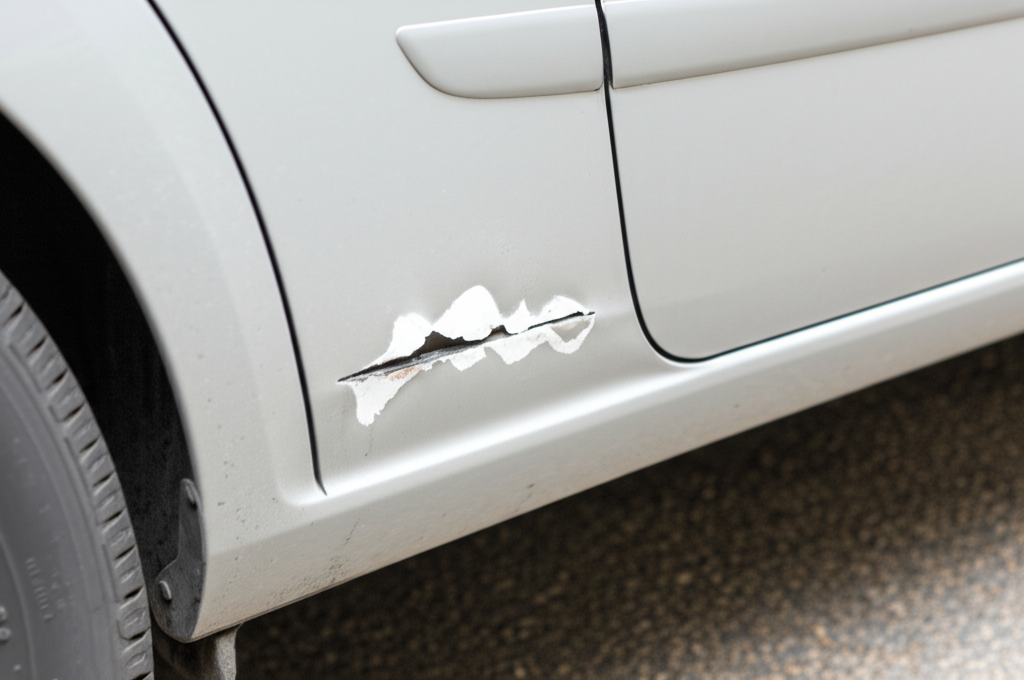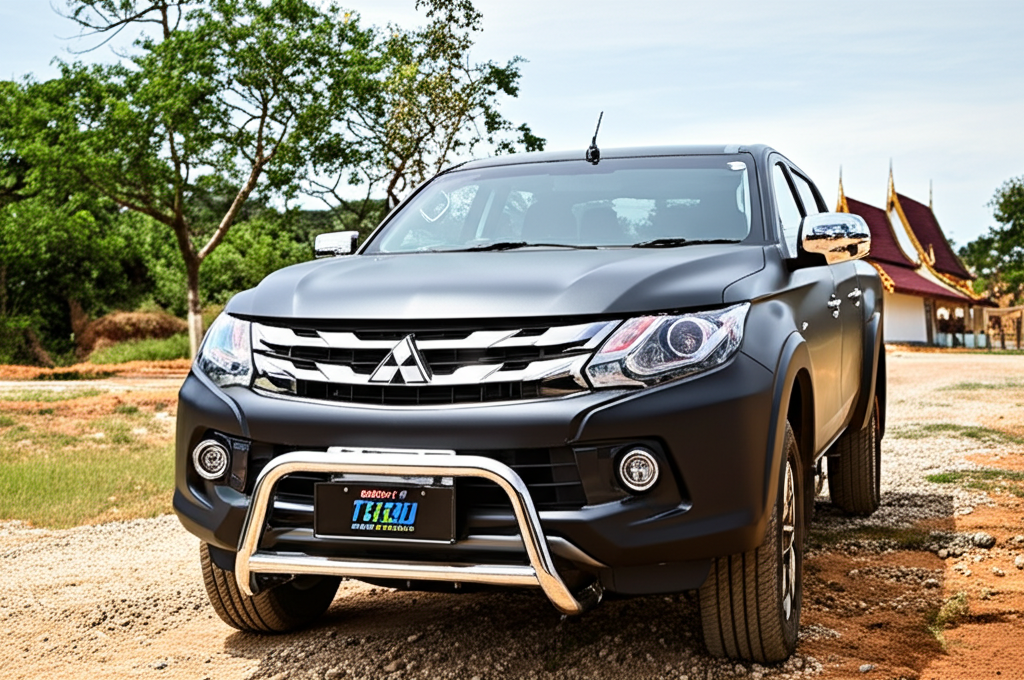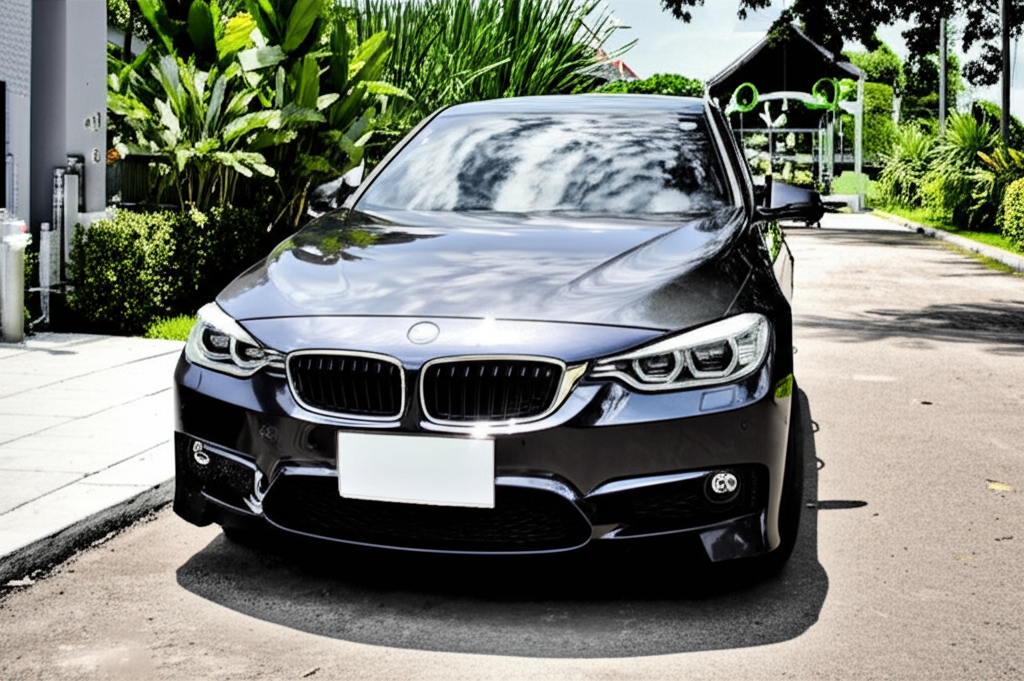You know that sound. That sickening *thwack* or *ping* against your car’s bodywork as you navigate another stretch of uneven, gravel-strewn Thai road. Whether it’s dodging potholes in Bangkok outskirts, exploring rural provinces, or just dealing with constant construction zones, the threat is real. Your heart sinks a little, dreading the discovery later: another chip, another scar on your car’s precious paint. It feels inevitable, doesn’t it? Gravel flying up, especially from your own tyres or the vehicle ahead, seems magnetically drawn to your pristine finish, leaving behind ugly marks that scream ‘damage’ and hint at future rust problems. It’s frustrating, costly to fix repeatedly, and frankly, diminishes the joy of driving. This leads many drivers, especially those who frequently encounter less-than-perfect roads, to ask: Is there a *real* solution? Can that much-talked-about TPU Paint Protection Film (PPF) actually stand up to the constant barrage of flying stones? And crucially, should you be considering protecting the often-neglected lower areas, even parts of the chassis?

Let’s talk about Khun Vichai. Vichai runs a small agricultural business just outside Chiang Mai. His daily commute involves several kilometers of unpaved, laterite roads, and weekends often see him exploring mountain trails in his trusty pickup truck. For years, the front bumper, bonnet edge, lower doors, and rocker panels of his truck bore the battle scars. “It was relentless,” Vichai recalls. “Every wash revealed new chips. Touch-up paint helped, but it never looked quite right, and I worried about rust starting underneath, especially during the rainy season.” He heard about Paint Protection Film but was initially skeptical. “Expensive plastic wrap? How could that stop a sharp stone?” After seeing a neighbour’s SUV, which remained remarkably chip-free despite similar usage, he decided to investigate further. He opted for a high-quality, 8-mil thick TPU film installation, specifically requesting coverage for the full front end (bonnet, bumper, fenders, headlights) and, importantly, the high-impact lower rocker panels and the painted sections just behind the wheels. The change wasn’t just visual; it was psychological. “The first few trips felt different,” he says. “I still heard the occasional ping of gravel hitting, but there was no corresponding wince from me. When I got home and washed the truck, the film might have tiny marks, but the paint underneath? Perfect. It’s been over a year now, driving the same rough roads, and the difference is night and day. No more obsessive chip checking, just peace of mind. It feels like the truck has armour.”

So, what exactly is this TPU film that gave Khun Vichai his peace of mind, and how does it compare to doing nothing or older solutions? TPU stands for Thermoplastic Polyurethane. It’s a sophisticated polymer known for its elasticity, transparency, resistance to abrasion, and crucially, its ability to absorb impact energy. Think of it like a transparent, self-healing shield for your paint. When a small stone hits the film, the flexible TPU layer absorbs and disperses the force, preventing it from concentrating on a single point and fracturing the paint beneath. Many high-quality TPU films also possess ‘self-healing’ properties; minor scratches and swirl marks (often from washing) can disappear with exposure to heat (like the Thai sun or warm water). This is a world away from older PVC (Polyvinyl Chloride) films, which tend to be less flexible, can yellow or crack over time under UV exposure (a major concern in Thailand!), and offer inferior impact protection.
Now, about that crucial question: the chassis area. When we talk about wrapping the ‘chassis’, we generally mean the highly vulnerable painted areas low down on the vehicle – rocker panels (under the doors), lower door sections, the area behind the rear wheels, and sometimes the lower edges of bumpers. These zones are directly in the firing line of debris kicked up by your own tyres. While wrapping the *entire* structural underbody is usually impractical and unnecessary, applying TPU film to these painted lower sections is highly recommended for drivers frequently on rough roads. This is where the majority of damaging side-impacts from gravel occur. Protecting these areas not only prevents chips but also acts as a barrier against moisture and grit that can accelerate corrosion if the paint is compromised.
Here’s a clearer comparison:
| Feature | High-Quality TPU Film | Older PVC Film | No Film (Paint Only) |
|---|---|---|---|
| Stone Chip Resistance | Excellent (Absorbs & disperses impact) | Fair to Poor (Can be brittle) | Poor (Direct impact on paint) |
| Self-Healing (Minor Scratches) | Yes (Heat activated) | No | No (Requires polishing/paintwork) |
| Durability / Lifespan (Thailand Climate) | Very Good (5-10+ years with care) | Poor to Fair (Can yellow, crack, peel within 1-3 years) | Paint degrades naturally, accelerated by chips |
| UV Resistance & Clarity | Excellent (Resists yellowing, stays clear) | Poor (Prone to yellowing/clouding) | Paint fades/oxidizes over time |
| Protection for Lower / Chassis Areas | Highly Recommended & Effective | Possible, but less durable/effective | Most vulnerable area |
| Typical Cost (Relative) | High (Investment) | Medium | None (Initial), High (Repair costs) |
| Best Suited For | New/Valuable cars, All drivers wanting maximum protection, Especially rough road users | Short-term cosmetic use (Not recommended for durable protection) | Drivers on perfect roads only / Low concern for paint condition |
The experience of drivers here in Thailand echoes the benefits. It’s not just about the technology; it’s about the feeling it provides on roads that often feel like they’re actively trying to damage your vehicle.
“I live near Pattaya and the roadworks are constant. Gravel everywhere. After getting TPU on the front and rocker panels of my sedan, I stopped worrying. Heard a big stone hit the side last month – checked later, tiny mark on the film, paint untouched. Huge relief!” – Sunisa K.
“My Fortuner goes everywhere – beach trips, mountain roads, you name it. Before PPF, the lower sides looked sandblasted after just a year. Wrapping those areas, especially behind the wheels, was the best decision. Looks clean, protected, and I know the resale value is holding up better.” – David P. (Expat)
“Was hesitant about the cost for my D-Max, but calculated how much I spent on touch-ups and the potential cost of respraying the lower doors due to deep chips… The TPU film made financial sense long-term, plus the truck just looks better maintained.” – Somchai R.
Hearing these stories, you can sense the shift from anxiety and frustration to confidence and satisfaction. That constant background worry about paint damage fades away, replaced by the assurance that your vehicle has a resilient layer of defence against the unavoidable hazards of Thai roads.
If you’re tired of flinching at every ‘ping’, tired of discovering new paint chips after every journey on less-than-perfect roads, then investing in high-quality TPU Paint Protection Film is a solution worth serious consideration. Especially for those crucial lower body and rocker panel areas that take the brunt of the assault from flying gravel and debris. Protect your paint, preserve your vehicle’s value, and most importantly, regain your peace of mind while driving in Thailand. Ready to give your car the armour it deserves?
📱 Want to learn more about car wrap & paint protection?
Feel free to reach us on LINE:

🌐 Official Website: https://tpuwraps.com
- Q: Is TPU film completely impenetrable to stones?
- A: While high-quality TPU film offers excellent protection against *most* common road debris like gravel and small stones, a very large object hitting at high speed could potentially penetrate the film and damage the paint. However, it significantly reduces the frequency and severity of damage from everyday hazards, especially the constant peppering from small stones that causes most chips.
- Q: How thick should the TPU film be for driving on rough Thai roads?
- A: For areas prone to high impacts like front bumpers, bonnet edges, and lower rocker panels, a thicker film, typically 8 mil (0.2mm) or even slightly more, is often recommended for better impact absorption. Standard 6-7 mil film is usually sufficient for less vulnerable areas, but consult with your installer about your specific driving habits.
- Q: Will the Thai heat and humidity affect the TPU film?
- A: Reputable TPU films are designed to withstand harsh climates, including high heat, humidity, and strong UV radiation common in Thailand. They contain UV inhibitors to prevent yellowing and cracking. However, choosing a quality brand and professional installation is key to ensuring longevity. Poor quality films may degrade faster.
- Q: Can I apply TPU film only to the lower parts/chassis area?
- A: Absolutely. Many drivers choose a ‘partial wrap’ focusing on high-impact zones. A common package includes the front bumper, part of the bonnet and fenders, headlights, side mirrors, and the lower rocker panels/door bottoms. This provides excellent protection where it’s needed most, at a lower cost than a full vehicle wrap.
- Q: How do I care for TPU film after installation?
- A: Wait about a week before washing the car to allow the adhesive to fully cure. Hand washing with a quality car wash soap and microfiber mitt is recommended. Avoid using high-pressure washers directly on the film edges. Most contaminants wipe off easily. You can apply specific PPF sealants or ceramic coatings designed for film to enhance protection and gloss.
Ultimately, driving on Thailand’s diverse and sometimes challenging roads doesn’t have to mean sacrificing your car’s appearance or value. TPU Paint Protection Film offers a robust, proven defence against the constant threat of stone chips and gravel rash. By strategically protecting vulnerable areas, including those crucial lower body panels, you’re not just applying a film; you’re investing in preservation, maintaining pride in your vehicle, and freeing yourself to enjoy the drive, no matter where the road takes you. Don’t let the fear of the next paint chip hold you back. Explore the protection TPU film can offer today.
